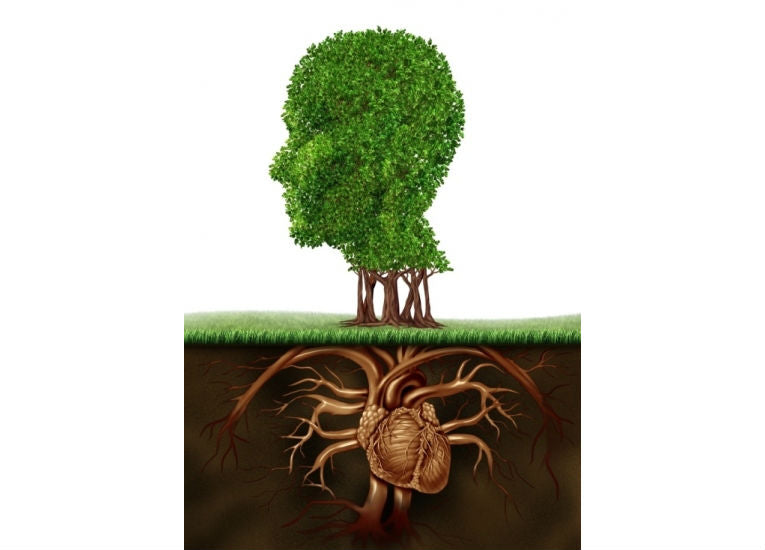Medical and epidemiological research need to connect with evolutionary advances in order to improve their approach to certain areas, according to informed sources. There are so many parts of medical work that can use evolutionary analyses that it has become neglected, at least in some areas. Understanding, diagnosis and healing are all affected by a recent evolutionary insight that is newly brought on board by doctors.
Stephen C. Searles of Yale University, Connecticut, and the Wissenschaftskolleg zu Berlin, has taken on a large responsibility here in what he agrees is a temporary niche. He hopes that soon, evolutionary medicine will be more properly incorporated into most teaching courses. Fair enough, the plethora of new research will impact medicine, but Dr Stearns patently believes the impact will be huge. His paper, 'Evolutionary Medicine: Its Scope, Interest, and Potential', publishes today in the Proceedings of the Royal Society B: Biological Sciences.
Genetics is perhaps the first human context in which evolution fits with medical practice. The genetic polymorphisms shared for around 6 million years with chimpanzees have been selected for and maintained throughout that time and of course the 200,000 years of human "history." The genetic bottleneck experience by every single human group that left Africa leaves interesting past events such as a proposed interbreeding with "Denisovan hominids."
The lost variation still haunts non-African peoples though. Race too is defined more effectively by evolutionary medicine. The concept is not genetic, it seems to recent researchers, leaving us with race as an almost purely cultural concept! Ethnicity is therefore little use in medical diagnoses, apart from a few genetic variants. These would be well-documented examples such as malarial resistance (with sickle cell anaemia), tuberculosis, hepatitis and leprosy; digestive/metabolic ability with milk and alcohol; and a third medical set of discoveries - the cytochrome and other respiratory compound variants found to be preventing proper drug-metabolism.
This latter set of problems has led to the development of "personalised medicine." Interestingly for the lactase persistence allele, it has been estimated to take up to 10,000 years for the gene to change from 1% to 99% frequency in a human population. Not surprisingly lactose-intolerance is common in all human populations. Our bodies just ain't modern enough it seems.
A similar pattern is found now for autoimmune disease, asthma and allergy. We've lost our microbiota that used to protect us! You could say we are too obese and don't use cardio-vascular exercise in modern cultures. That simply leaves us with addiction with which we are all confronted in many different ways. No answer to modern addictions can be found in medical or any other culture.
"Worms," for want of more accurate descriptions filled our guts at one time. With bacteria now disappearing to some extent too, the usefulness of such awful symbiotic entities has been forgotten. Now we have immune responses that behave pathologically, provoking the need to develop drugs to mimic the co-evolved and self protective worm actions in order to protect us from ourselves!
Stephen Searles quotes an amazingly interesting case. MS sufferers with worms were contrasted in a study with those who were "wormless." Over 7 years, the wormless rapidly worsened, but the others didn't. Using eggs of pig whipworms, Trichurus suis, patients were found to improve or alternatively they didn't worsen their MS condition. A practical therapy is currently under development. The early birds will indeed get their worms.
Below: young pinworms gather for a good meal. Unlike most "worms", they are still quite common.

Pinworms image; Credit: © Shutterstock
Contraception has revolutionised the human menstrual cycle. Instead of the lactational and pregnancy interruptions (producing as few as 70 cycles in a lifetime) in a natural population, modern women experience 350 cycles per lifetime. The effect? Many more somatic mutations as breast tissue differentiates and multiplies five time more than normal. The well-known effect of protecting against ovarian cancer leaves the contraceptive pill neither gaining nor losing cancers overall, however. Back to conception - we breed, or can breed at 2-3 year intervals, compared to a chimpanzee's 4-7 years. The menopause is another prominent difference from the chimpanzee situation. Grandmothers can help their daughters to rear children and the survival of a woman's last child would be enhanced if menopause has a function. An interesting counter to that kind of theory involves the ovary maintaining high quality in its oocytes.
In similar fashion, kin selection by the behaviour of relatives has become an established theory. The harmonious relationship between mother and child is supposed not to exist. Instead, the foetus is able to dangerously upset the mother's blood pressure in pre-eclampsis or her blood sugar in gestation-related diabetes.
The mother and father of course share little genetic investment and so parent of origin effects are seen when it benefits the father's or mother's genes to perform certain actions. More relevant to common medical practice is the growing belief that the whole female reproductive tract is a quality control system. This is a diverse and fraught field. It is sufficient to mention perhaps that Hutterite (A Canadian and US religious minority) women were spontaneously aborting and an allele at the MHC loci was found in both sexes, causing the disruption. The effect had been reduced because women were not marrying such mates very frequently. The relevant conclusion is that mate preference indicating partner's health can be active in humans!
Evolution in medicine - Part II










